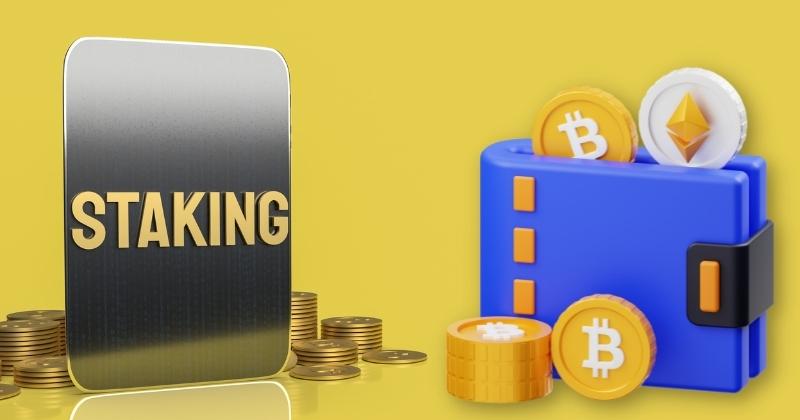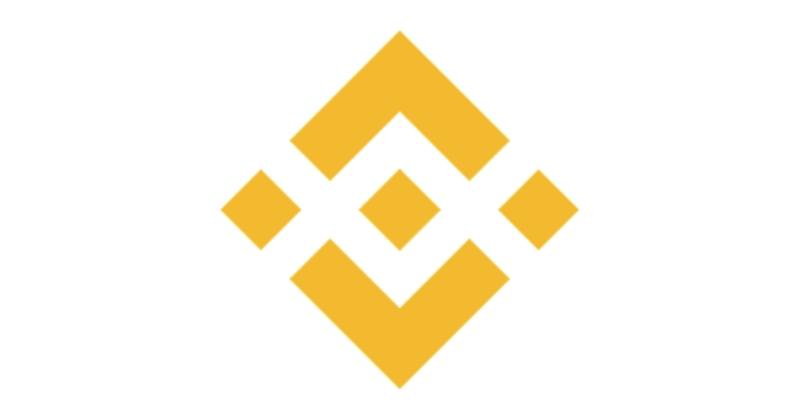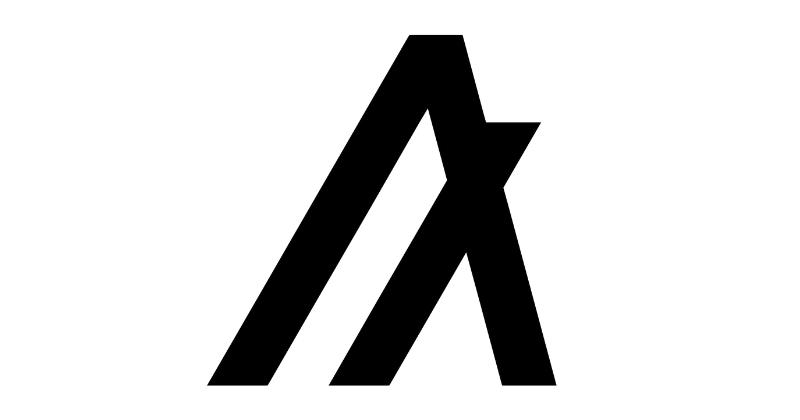There are plenty of benefits to cryptocurrency despite its volatility. One such benefit is called staking, which lets you earn rewards on your cryptocurrency.
So what is crypto staking in Canada and how does it work?
Think of crypto staking like buying a bond or GIC, but with added risk. You lock up your assets and in return, you earn rewards, typically in the form of more of the same asset.
Sometimes there is no lock-in period, and in that case, staking works similar to a high-interest savings account, except with much more risk.
However, with cryptocurrency, you have the potential to earn much more than with traditional finance, but this does come with drawbacks.
With our guide to crypto staking in Canada, you’ll get a better understanding of how staking works, where to stake your cryptocurrency, the benefits of staking and also the downsides.
What is Crypto Staking?

We briefly touched on what staking is but let’s take a closer look. Staking requires users to deposit their cryptocurrency and commit it to the blockchain network. Most networks that use Proof-of-Stake (PoS) consensus algorithms offer staking.
There are typically two results from staking crypto:
- Providing support and function to the blockchain
- Earning rewards
Surprisingly, staking has been around for a decade. It was created as an alternative to Proof-of-Work mining, which requires a lot of electricity and computing power to validate blockchain transactions.
When you stake your digital assets, you commit them to the project’s blockchain. Some blockchains require that you lock your tokens for a set amount of time while others don’t.
Additionally, there are blockchains that won’t let you access your staked crypto while it’s locked. You’ll have to wait a certain period of time to unlock them.
Locking your crypto helps validate new transactions on the blockchain while securing the network. Users who stake their crypto receive rewards, which are usually based on a type of APY (Annual Percentage Yield).
As a result, the more you stake, the more rewards you’ll get.
Understanding Crypto Staking

We’ve thrown a lot of terms at you that may or may not make sense based on your crypto experience. Let’s look a little closer at how staking works.
The first thing to know is that Proof-of-Stake is a consensus mechanism used by blockchain networks. Through staking, validator nodes work to confirm and approve network transactions.
Once they receive approval through consensus, transactions are then permanently stored on the blockchain.
Not everyone who stakes coins to a blockchain is a validator, but the more crypto you hold for a network, the better your chances of becoming one. Plus, the more assets you hold, the more rewards you receive.
Once all validators work together to confirm transaction information, it is added to other transactions to form a new block in the network.
When a new block is added, the network creates new coins, which are distributed among validators and stakers as rewards. Your rewards are yours to keep for as long as you want.
You can unstake them if you want to sell them or trade them – unless the coin you’re staking has a lockup period.
Ways to Stake Crypto in Canada

There are plenty of crypto staking opportunities in Canada. Here are a few ways you can stake your favorite cryptocurrencies:
Through the Project
This method might require you to get involved directly with the project itself. For example, popular staking cryptocurrency Cardano (ADA), has a platform that allows users to stake tokens straight to the blockchain.
Through Daedalus, Cardano holders can choose their validator and watch their tokens grow.
Find a Staking Pool
You can also find a staking pool. These are pools that consist of investors that have gathered together to receive better rewards from their staked assets. There are plenty of staking pool platforms on the market, which include popular options like AQRU and Crypto.com.
Use a Crypto Wallet
Another great way to stake your favorite cryptocurrency is through a wallet. This is an excellent option for users who want to stake more than one cryptocurrency at a time in a single platform.
Exodus wallet is an excellent option as it allows users to stake up to eight different coins, including Solana (SOL), Cosmos (ATOM), and Algorand (ALGO).
That’s not to say it’s the only option available. There are other well-known wallets for staking such as Trust Wallet, Atomic Wallet, Phantom Wallet, and many others.
Access a Crypto Exchange
Using an exchange isn’t our favorite staking method, but it is a method nonetheless. The biggest concern with using an exchange for staking cryptocurrency is the possibility of being hacked.
Popular platforms like Coinbase, Kraken, and Binance give users ways to stake dozens of cryptocurrencies.
Best Cryptos to Stake

There are hundreds of cryptocurrencies you can stake, but not all are reliable or trustworthy projects. Here are a few of the best cryptos you can stake:
Cardano (ADA)

Arguably the most well-known staking cryptocurrency, Cardano is a project that attempts to offer users a better version of Ethereum. The network focuses on scalability, flexibility, and sustainability as its primary tenets.
Developers using the Cardano platform can build smart contracts and decentralized applications (dApps).
With its revolutionary Proof-of-Stake mechanism, Cardano is providing a legitimate answer to the energy-intensive required to mine for Bitcoin and other cryptocurrencies.
Because Cardano is split into two layers – a layer for transactions and accounting and another for running dApps – it can provide amazing transaction speeds for its users.
Polkadot (DOT)

Like Cardano, Polkadot is an Ethereum challenger that focuses on interoperability between separate and distinct blockchains.
For example, Polkadot wants to give the Bitcoin blockchain a way to interact with the Ethereum blockchain.
It accomplishes this through the use of parachains, which are parallel blockchains that help increase transaction speeds.
As a result, Polkadot can offer speeds much faster than many other blockchains.
Binance Coin (BNB)

Another staking coin that’s getting more traction is Binance Coin. This cryptocurrency is the native token of the Binance exchange, which is one of the biggest cryptocurrency platforms in the world.
Binance Coin is used by many users to pay lower transaction fees. However, there are also many who have started staking their BNB and earning significant rewards by doing so.
Algorand (ALGO)

Algorand is a cryptocurrency that looks to improve some of the biggest problems that face the crypto market. These include scalability, decreasing cost, improving security, and developing faster transaction speeds.
Developers can use Algorand to create smart contracts and dApps. Algorand users can also mint NFTs (non-fungible tokens).
Solana (SOL)

Another popular Ethereum competitor is Solana, which was developed to do what Ethereum does but to do it better. With SOL tokens, users can vote on how the platform is governed and what improvements or features are added.
Additionally, Solana is a popular platform for NFTs, decentralized finance, and smart contracts.
Advantages of Staking Crypto

There are plenty of benefits to staking cryptocurrency. However, for most users, earning rewards is the highest priority.
Still, staking is more than a one-trick pony. Here are some of the advantages to staking crypto:
Passive income
As we mentioned, earning rewards and passive income is a significant part of staking cryptocurrency.
However, part of the fun comes in finding the platform that offers the best APR, the shortest withdrawal times, or the lowest commission charges.
Once you’re comfortable with staking, take some time and explore the market for the most investor-friendly platforms.
Easy to get started
The underlying technology of blockchains and cryptocurrency can get confusing quickly. Fortunately, when it comes to staking, you don’t have to have much in the way of technical knowledge.
Plus, you don’t have to have a lot of money to get started. Some people begin staking with as little as $10.
Save energy
Many people compare staking to mining since they’re two of the most popular consensus mechanisms (Proof-of-Stake vs. Proof-of-Work).
What people may not know is that to get a solid return on investment for mining, you’ll need to own expensive computer hardware.
Not only that, you’ll use a lot of electricity over a long period, which isn’t very environmentally friendly.
Staking, on the other hand, is accessible through a desktop computer, a laptop, or even a smartphone or tablet. It doesn’t require a lot of computing power and significantly reduces the amount of energy required.
Drawbacks to Staking Crypto

As grownups, we all know that no market or technology is perfect, and the same is true for staking cryptocurrency. Here are some of the drawbacks you might encounter when staking your favorite crypto:
1. Crypto market
The cryptocurrency market is volatile. Anyone who tells you otherwise is either lying or selling something. Or perhaps both. Staking crypto can provide high returns on your investment.
Even in a down market you can get APRs as high as 7% or 8%. However, there’s no value if the price of your cryptocurrency is dropping.
Keep that in mind as you stake your crypto. If you can afford to ride out the highs and lows of the market, you stand to get a decent return.
But if you pull your crypto at the first sign of trouble, you’re likely to lose money on your investment.
2. Hackers, fraudsters, and scammers
The crypto market is only thirteen years old. While it seems like Bitcoin has been around much longer, the reality is that it’s still a new industry.
As a result, there are plenty of nefarious actors out there who are ready to take your money. Researching a platform before staking is critical. You want to ensure your funds are safe and secure.
Find sites that are known for their reliability and have been around for a while.
These platforms are usually regulated but they’ll offer better levels of security, which means you don’t have to worry as much about losing your cryptocurrency.
3. Locked-up rewards
It is common practice for some platforms to require that users lock-up their staked cryptocurrency for a certain period of time.
Often it’s less than a month, but if you decide to withdraw your locked assets, the platform will charge you a fee.
This is done to discourage stakers from moving their money whenever the mood strikes and gives stability to the blockchain.
Conclusion

Crypto staking in Canada is a great way to earn passive income and isn’t as burdensome as crypto mining.
Buy some crypto, find a reliable platform to stake your assets, then leave it alone. But be aware of all the risks and downsides of staking also, and be cautious.
There are several ways to get started, so you’re not limited to just a single option. You can choose one that is as hands-off or hands-on as you want.
Remember that crypto is a young industry, so there are projects out there designed specifically to take people’s money.
Look for a secure, reliable, and reputable platform, then put your crypto to work.



